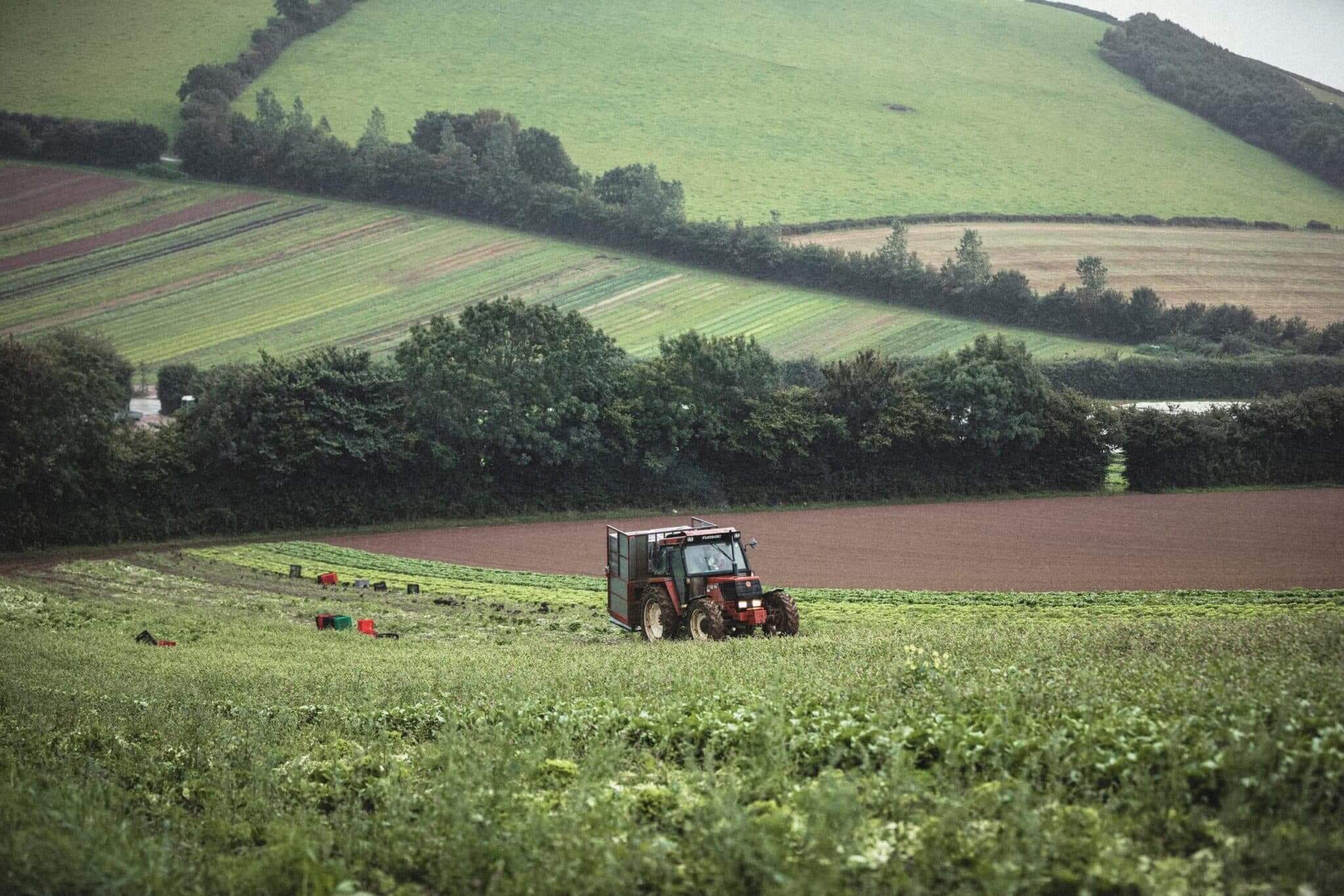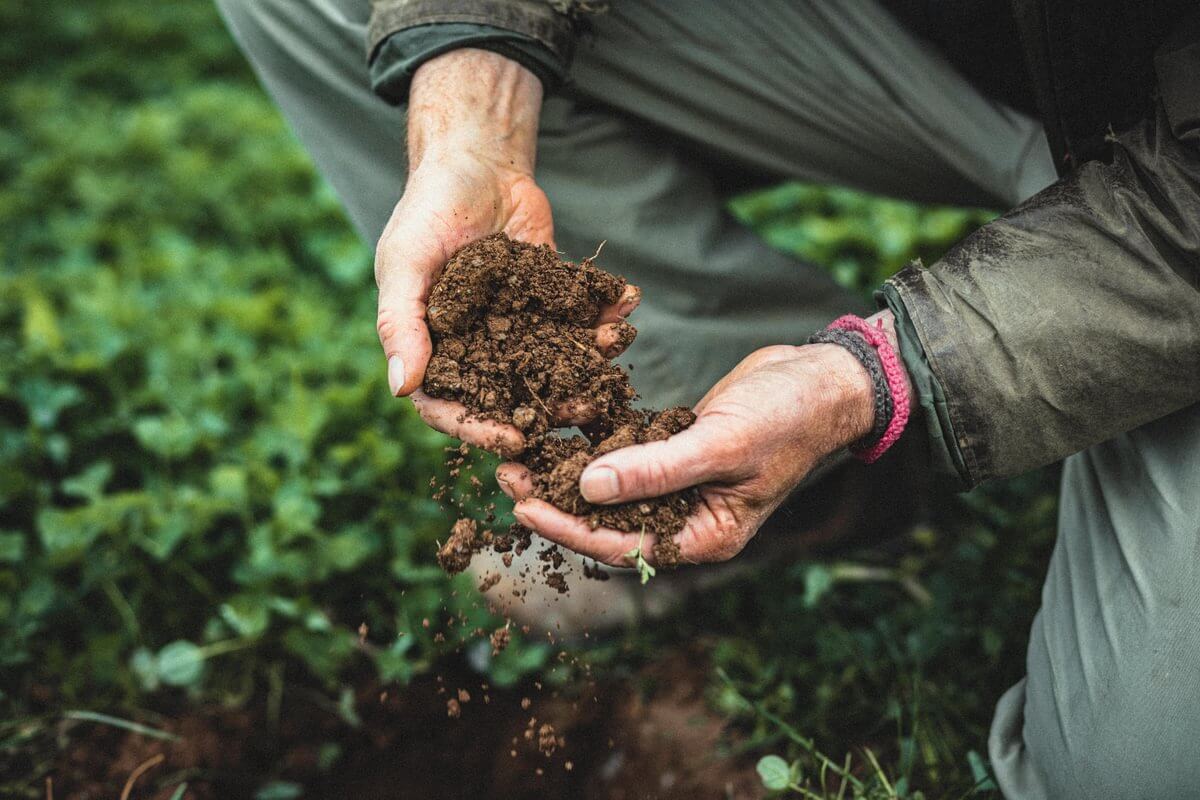The next six to eight weeks are the most challenging of the year for a veg-loving locavore. Onions, carrots, and potatoes, held in store since autumn, are starting to sprout. Swedes and parsnips in the field, sensing spring, get woody as they prepare to run to seed. Most cabbages and kales have already bolted. Soon, you will start to find telescoping cores in your leeks, which would carry their starburst flowers if we let them. Cauliflowers and spring greens still have a month left to run, and purple sprouting broccoli is at its best, but we are nearing the end of these crops.
Devon’s first spring-planted lettuces, spinach, radishes, turnips, salad leaves, and early potatoes will not arrive until May. The first peas, beans, and cabbages follow in June. The ‘Hungry Gap’ – between old and new season crops – is a challenge until July, when abundance returns with tomatoes, courgettes, broccoli and cucumbers. In the early 1990s, when Riverford and the other veg box pioneers delivered our first boxes, many schemes would simply close from March to July, rather than face disgruntled customers rightly bemoaning poor quality and repetitive contents.
Over the years, we have narrowed the gap – via better storage, choosing varieties which extend the end of the season, and using polytunnels and insulating covers to speed up the new crops. With the head start of an existing root system, perennial (i.e. growing back year after year) spring crops like rhubarb and cardoons arrive earliest. They help to keep the boxes full and interesting, along with wild garlic from the woods, which is at its best over the next few weeks. For the future, we are also working on a perennial kale variety which, if we master it, will provide tender greens through April and May. Perhaps we might even farm some nettles.
I commend the 11 per cent of customers who now buy our UK-only veg boxes; a much higher figure than ever before. We are debating whether the UK boxes will be forced to take a break around May for lack of veg. For those less committed to a really local diet (I admit to being one myself), around half of the veg in our other boxes will be coming from further south over the next two months; from my farm in the French Vendée (lettuces and pak choi arrived last week), and a group of growers in Italy and Spain (I enjoyed the first asparagus from Pepe, near Granada, last night).
I will write more on those growers and the associated carbon emissions soon.
















I like to buy home grown, but if you looked at my order you’d say what about that and that and that etc. On the other hand I would try hard to not be somebody who complained for we are so privileged where we live and particularly having an ethical supplier/grower of our food. A few weeks of a limited choice of foods is ok, especially since we can always supplement with a bit off frozen or tinned. I like the idea of nettles ( I do have a patch in the garden ) Lots off good stuff in Nettles.
A few weeks ago we saw perennial Taunton Dean cottagers kale at the walled garden at Knightshayes Court NT Devon…..